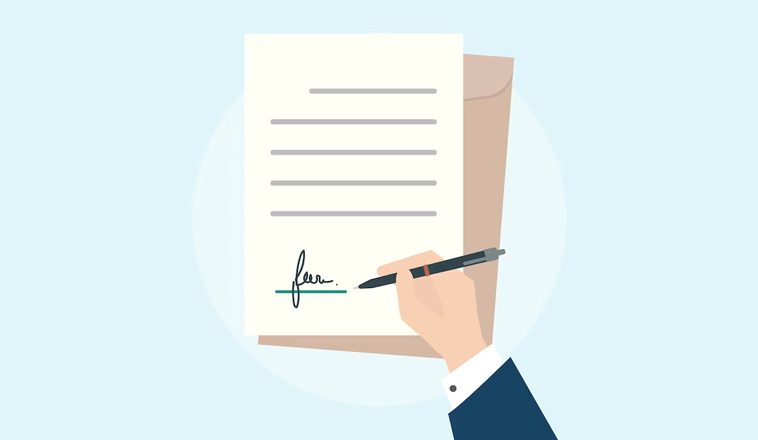Even amidst all the new marketing channels and technologies, email marketing remains one of the most effective channels with one of the highest potential ROIs. On the other hand, email signatures are a very important aspect of any email marketing strategy.
Email signatures are a very important lead generation device on its own that is also very useful for your sales team. According to a study, a small company can generate around 1.2 million impressions from email signatures alone, equivalent to around $100,000 in PPC ads.
What’s more, email signature impressions are highly targeted since you send your email to consenting recipients. Meaning, unlike ads, they won’t block your emails. In fact, in many cases, email signatures are often the first visual impression seen by your business’s potential prospects.
With email, marketing already has potentially high ROI; email signatures can also be the highest ROI channel among your account-based marketing channels. In short, email signatures can be very effective in three core aspects of your business:
- Build awareness and start relationships (lead generation)
- Inform and educate your prospects (lead nurturing)
- Encourage conversions
So, optimizing your email signature design is very important if you want to boost your marketing and sales performance. Here, we will discuss the concept of email signature design and how to optimize it to improve your content marketing reach, generate more awareness and leads, and, ultimately, drive more sales conversions.
Table of Contents
Email Signature Design: Basic Principles and Best Practices
Above anything else, your email signature should be comprehensive for human readers: easy to read with good structure, and should include the following elements:
- Name of the sender
- Job title
- Email address
- Phone number
- Website URL (company URL)
Now, we certainly can use basic text or HTML code that includes these five basic elements. However, most likely, it won’t be very attractive for your recipients, and this is why for the rest of this guide, we will go through how we can optimize the design to attract more prospects and encourage conversions.
For example, let’s compare these two email signature examples:
We are more likely to remember the latter, and we are more likely to click on the website’s URL or the CTA (“Request a demo”).
Speaking about CTA, we can also add a CTA in plain text or with an optimized design. If your CTA is just another text element in an email that is already busy with text, it might not be very effective in encouraging your recipients to click this CTA.
As you can see from the above example, you can get an optimized email signature without including your email address. Most people will just hit the reply button on their email app anyways, so it might be redundant to add your email address. However, some organizations still prefer to put email addresses on signatures for extra exposure/awareness, so it’s easier for recipients to find them.
Since we want our email signatures to be clickable and interactive, then a plain image (JPG, PNG, other formats) is not preferred. Most optimized email signatures are created in HTML code, including images, GIF elements, and even full banners, which we will discuss below.
See More: Tops Reasons Why Email Marketing Is Indispensable
Email Signature Design: Optimizing The Elements
As we’ve briefly discussed, the common practice is to create your email signature in an HTML format. HTML5 is akin to a blank canvas where we can include all the different kinds of design elements that are also clickable/interactable, so we can include images, animated banners, and even videos if you want.
With that being said, we can consider adding the following elements in the HTML block:
- Headshot: adding authenticity and a human feel to the email signature
- Company logo: pretty obvious and can be a great way to attract your reader’s attention
- Social media icons: link to your social media platform profiles; social media links tend to have high click-through rates
- Brand color: using your brand color palette, useful especially if your brand is already well-known
- Animated banners: very useful to improve click-through rate, and this is where you can put your CTA
So, how should we use these elements in our design? Let’s discuss them one by one:
Personal Headshot
As we’ve briefly discussed above, using personal headshots is an effective way to tell and convince your recipient that a real person is sending the email. Various studies have also shown that using human photos can significantly improve conversion rates.
Why? Because we are naturally attracted to faces, smiles, and eye contact. It’s also a common practice to see headshots when we interact with any personal information in business settings, thanks to LinkedIn.
In short, add a well-taken headshot on your email signature. The common practice is to add it on the side (either side) of your signature, and you might want to bound it within a masked area (a circle/square mask, but if your logo allows, you can also put the headshot into a mask the shape of your logo).
Make sure your headshot doesn’t dominate the whole signature. Keep it small, and consider the balance with the other elements. Since people tend to change headshots, consider making it a separate image element (not bound to a larger image) within the email signature, so it’s easier for your personnel to change their headshots when needed.
Company Logo
Your company logo is an important aspect of showcasing your brand identity. It would only make sense to include your logo and make it as noticeable as possible on your email signature.
A key consideration here is its size: too small, and your recipient might not notice it, too big, and it might be overwhelming for the overall design. You should also consider your logo’s design when determining the correct size. If, for example, your brand mark only looks good when it’s displayed in a large size, then you might want to only use your brand name/logotype in the signature.
Regarding placement, you can use a few different approaches, but the general principle is that your logo shouldn’t interrupt the signature block’s user experience. You can use a centered logo at the top or bottom of the signature block, but sandwiching your logo between two blocks of information is a big no-no.
It is generally better to place your company logo on either side of the signature. Putting your logo on the left-hand side is generally preferred since most of us want our audience to see your logo first before seeing contact information. But, putting it on the right can work as well if you want them to read your contact first for one reason or another.
Brand Color and Fonts: Design Mood
A common approach is to incorporate colors your brand is identifiable with, which can especially work if your brand is already relatively well-known. Using brand colors can set up the mood of the message you’d want to convey in your email signature and effectively communicate company values.
Creating a sense of continuity throughout your branding is very important, and especially if you are nurturing leads, this can help in familiarizing your recipients with your brand messages.
If you have your fonts (or have decided on a font for your brand), you can incorporate it into your email signature to match fonts in your other marketing channels. Again, this small practice can help in building a sense of continuity and familiarity.
Social Media Buttons
In this age of social media marketing, providing clickable icons that connect with your business’s social media profiles can effectively drive engagements. However, don’t include too many icons, which might be counterproductive. Not only would it make your email signature looks cluttered, but it might also create choice paralysis and discourage engagement/conversion instead. In general, just pick two and maximum, three of your best-performing social channels.
Optimizing Email Signature Animated Banners
An email signature banner is a graphical, animated banner designed to blend into your email signature. Their animated nature can be effective in capturing your audience’s attention and can significantly boost conversion rates.
Also, you can include your other promotions in the banner. For example, if you just launched a new product, you can display it in this banner. Similarly, you can also promote events, downloadable content, discounts, and so on.
Not only is this banner free, but it also has a high potential click-through-rate of above 5%. So, it is a very effective lead generation device and marketing channel, and we shouldn’t disregard it.
Email Signature and Banner Design: Best Practices
Maintain Continuity and Consistency in Branding
It’s very important to have an established branding strategy before designing your email signature. Your brand message and overall mood should be consistent and communicated in your email signature.
For example, if you want to convey professionalism with a minimalist design approach, make sure it’s projected both in the email signature and in your banners. As we’ve also discussed, you should use the same font (or fonts) that your brand use in your website and social media profiles while also using your brand colors.
While you can use contrasting colors here or there or accenting design elements to capture attention, it’s important to maintain continuity.
As a general rule of thumb to measure continuity and consistency, you should be able to place your email signature and banner on your site’s homepage, and they should fit in right away.
Avoid Clutter
Be straight to the point and keep it simple. Remember that in today’s saturated digital marketing, less is more. If your email signature and banner are too busy, people will simply bounce.
Include only the information, links, and CTAs necessary and make sure you are communicating a clear message. In this aspect, you should consider:
- Your target recipients and their behaviors/needs
You should communicate the right message for the right audience for it to be effective. This can involve creating different email signatures and banners for different departments, for example, slightly differentiating signatures of your sales team and your marketing team.
You can also customize signatures based on location/language or role. It’s best to map out your employees and their potential recipients so you can develop a customized, personalized strategy for each.
Grow Your Business With Confidence
- Your objective
What is the goal you are trying to achieve with your email signature campaign? There are various potential objectives you can pursue, including:
- For them to click on the banner (and direct them to a landing page)
- For them to visit your website
- For them to visit your social media profiles
- Call/text you
- Download an offer
And so on. Your design approach should focus on achieving this goal. For example, if you want them to visit your site, you can emphasize this by making your site URL more attractive and/or easy to find.
- Mobile-friendliness
Most people nowadays check their emails on mobile devices, so make sure your signature and banner are properly optimized for mobile. Typically you should design your signature and banners using the screen size most of your audiences will view; however, test on as many mobile devices as possible.
- Fewer colors and fonts= better engagement
Again, remember that many of your recipients will be reading their emails on mobile devices, and using fewer colors generally will translate to better readability. Also, the more colors you use, the more risks of display issues you might have, like contrast issues with today’s dark mode on browsers and OS.
It’s generally the same with fonts: less is more. Unless it’s necessary, you should stick with a single font throughout your email signatures and minimize font variations on your banner.
Also, You Can Read Steps to Building a Successful Email Marketing Campaign
Create Guidelines For Your Team
Detailed guidelines for your email signature and banner will be useful not only for your designers but for your employees/email owners when they want to change their headshots or update their information.
Your email signature guidelines should include (but not limited to):
- A description of the objective(s) of the email signature. If you have many different objectives, you can list the top 3. Again, less is more.
- General design guidelines describing the overall mood, feel, and look of the email signature.
- A list of what information is mandatory in the email signature and what should not be included.
- Design constraints
- Email deliverability expectation
- A brief description of how your signature banners can be integrated with other marketing channels/system (if any)
- Resolution, size, formats, and other specification requirements.
- Description of form factor (or device) that should be considered the default
- Guidelines on fonts and brand colors to use
On the other hand, you should also create your email banner guidelines. As we’ve discussed above, we can use many similar design principles in both the signature and banner; however, your banner might have its specific requirements.
Check Out the Quick Video Review On Ultimate Guide To Email Signature
Source: Exclaimer
Conclusion: You Can Start Designing a Conversion-Optimized Email Signature
In this guide above, you’ve learned:
- How email signature and email banner can be very powerful and cost-effective lead generation devices and marketing channels
- How email signature can be very effective in building brand awareness and engage your target audience
- How to create an HTM, custom-tailored email signature
- What kinds of information must be included in your email signature and banner (and what should be left out)
- How to design a conversion-optimized email signature and banner
- How to develop email signature guidelines for your designers and team
Now with this knowledge, you are ready to create a comprehensive email signature strategy and develop an email banner as your next top marketing channel.
Email signatures can be a powerful lead generation device to build awareness about your brand and a highly targeted digital marketing channel with potentially high conversion rates and ROI. We hope this guide can help you grow your business and enhance your marketing performance with an optimized email signature campaign.
Here are a few more topics that you shouldn’t miss:
Could Your E-Commerce Business Benefit from a Competitive Analysis?
A Stress Free Way to Build an Attention Grabbing BigCommerce Popup
How to Fix SSL Connection Security Certificate Error on Android?
Like this post? Don’t forget to share






